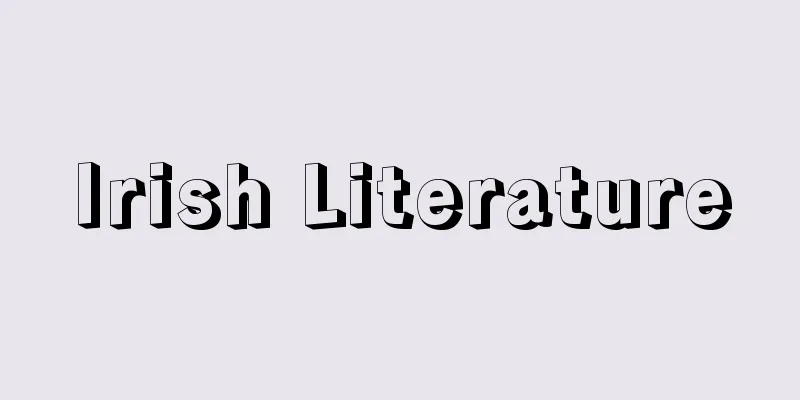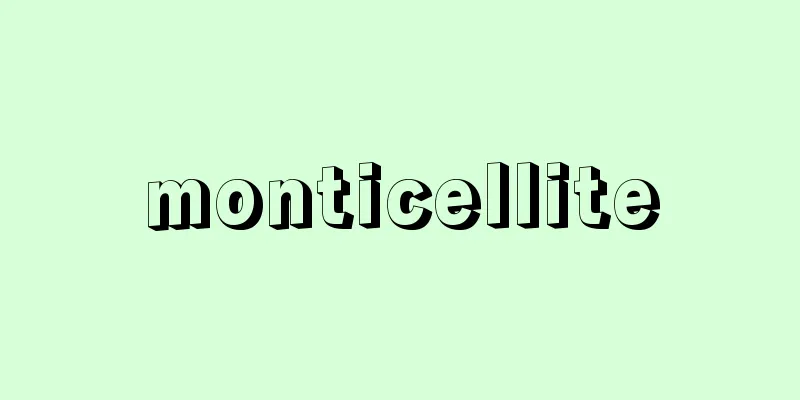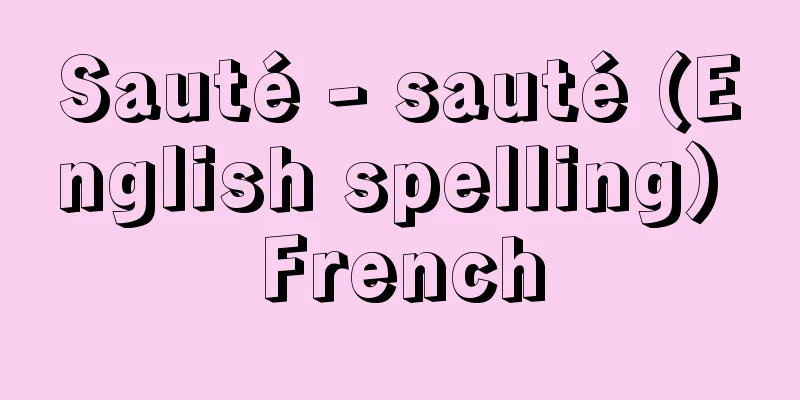Irish Literature

|
Goyderian is a branch of the Indo-European Celtic language family, which is further divided into three groups: Irish Gaelic, Scottish Gaelic, and Manx Gaelic. The native language of Ireland is Irish Gaelic (hereafter referred to as Gaelic or Irish), which was commonly used until the Great Famine in the mid-19th century. The colonial policy, which began with Henry II in the 12th century, passed through Henry VIII in the 16th century, and continued until Cromwell in the 17th century, strengthened British rule over Ireland, and with the Act of Union in 1801, the country became part of the United Kingdom. At the same time, linguistic colonization also progressed steadily, and in the 19th century, there was a landslide shift from Gaelic to English. Thus, Irish literature inherits two cultural legacies. One is Gaelic literature in the mother tongue (Gaelic literature), and the other is literature in English (Anglo-Irish literature). [Masayoshi Osawa May 21, 2018] Oral traditionIn Ireland, oral tradition is alive and well. Oral storytelling is the origin of Gaelic literature, and the collection of stories preserved in ancient manuscripts is said to rival that of Greece in richness. These myths and heroic legends are usually divided into three groups: (1) Mythological Tales: A collection of myths related to the indigenous tribes of Ireland The evolution of Gaelic literatureAfter Christianity was introduced to Ireland in the first half of the 5th century, monastic culture flourished from the 6th to 9th centuries. Ireland was called the "Island of Saints and Sages" and enjoyed a golden age as an important cultural center in Europe. The Viking invasions that lasted for about a century from the 9th century caused the monastic culture to decline, but bards (minstrels) descended from the Druids (they formed the intellectual class of ancient Celtic society, and were both Druid priests and folk poets) continued to pass on traditional poetry under the patronage of powerful families and Anglo-Irish aristocrats. After the 17th century, the collapse of the Gaelic clan system caused the school of professional bards to decline, and simpler and freer poetic forms began to be used. Eventually, in the 18th century, excellent Gaelic poetry was born, such as the comic satire of Brian Merriman (c. 1747-1805). In the 19th century, linguistic dominance in the country shifted almost entirely to English, but with the rise of the nationalist movement a movement to revitalize the Gaelic language arose, and especially since the founding of the Gaelic League by Douglas Hyde in 1893, there have been persistent attempts to restore Gaelic literature. [Masayoshi Osawa May 21, 2018] Anglo-Irish literatureThe first great writer of Anglo-Irish literature was the 18th-century Jonathan Swift, whose works show a free-spirited satire linked to the Gaelic tradition. 18th-century Ireland produced many Irish-raised comedians, such as William Congreve and R. B. Sheridan, but these writers, whose main base of writing was England, were not particularly interested in Ireland. In the first half of the 19th century, the poet Thomas Moore (1779-1852) was widely praised for the beauty of his Irish lyricism, and he strongly stimulated the patriotism of the Irish people. In the mid-19th century, outstanding poets such as James Clarence Mangan (1803-1849) and Samuel Ferguson (1810-1886) sang of the past glories of their own culture. On the other hand, this period produced a number of unique novelists, including Maria Edgeworth, who closely observed the state of the country and highlighted its regional characteristics, Charles Robert Maturin (1782-1824), William Carleton (1794-1869), and J. S. Le Fanu. However, for the distinctive character of Anglo-Irish literature to be clearly articulated, it was necessary to wait until the Irish Literary Revival, which developed in response to Hyde's movement for the revival of the national language. [Masayoshi Osawa May 21, 2018] Irish Literary RevivalThe Literary Revival, which began at the end of the 19th century as a combination of nationalism, language, and culture, aimed to restore Irish culture by reevaluating its unique cultural heritage and awakening its traditional national spirit. The leading figure in this movement was the poet W. B. Yeats (1923 Nobel Prize winner). Yeats' early poems and verse dramas drew inspiration from Irish mythology, while J. M. Synge, following his advice, used the customs and dialect of the west region, where the original Irish character is best preserved, as material for his plays. Theatrical activities based at the Abbey Theatre, which was founded in 1904 by Yeats and Lady Gregory (1852-1932), were the core of this movement, and Synge's works were a brilliant success. Later, with Sean O'Casey in the 1920s, the status of Irish theater was firmly established. Yeats's greatness as a poet, who energetically promoted the literary revival, goes without saying. He is said to be the last Romantic, but he was also a pioneer of modern poetry. The field of novels also flourished during the revival, and George Moore in particular played a pioneering role in leading the American novel from the 19th century to the 20th century. [Masayoshi Osawa May 21, 2018] The exilesOn the other hand, there are writers who left the country to write abroad, such as Oscar Wilde, G.B. Shaw (Nobel Prize winner in Literature in 1925), and James Joyce. Exile is an important theme in Irish literary tradition, and the presence of these modern expatriates is a notable feature that shows the complexity of Irish literature. Ireland has produced the greatest novelist of our time: Joyce. To quote the poet Seamus Deane (1940-2021), Joyce was an Irish writer who rejected the limitations of being Irish, and an English writer who rejected the limitations of being an English writer. It is impossible to talk about contemporary literature without him, and his influence is comparable to that of Yeats in poetry, inspiring such geniuses as Samuel Beckett and Flann O'Brien (1911-1966). [Masayoshi Osawa May 21, 2018] Separation from colonial statusThe year 1922, when Joyce's Ulysses was published in Paris, was also the year the Constitution of the Irish Free State was established. The country, which had been under British colonial rule, had endured the pain of the separation of the six northern counties (1920), but it had finally come to the time when it could take control of its own sovereignty. A new constitution was established in 1937, and the following year, Douglas Hyde became the first President of Eire (the Gaelic name for Ireland), and in 1949, Ireland achieved complete independence as the Republic of Ireland. The 20th century was a turbulent time for Ireland, which attempted to break away from its colonial status in the first half of the century, as symbolized by the Easter Rising of 1916, and then faced the Northern Ireland problem in the second half of the century. The country's contemporary writers have been devoted to tense literary endeavors that question their own identity, while incorporating a reaffirmation of their unique cultural traditions into an international perspective. [Masayoshi Osawa May 21, 2018] Today's writersNorthern Irish-born Seamus Heaney (1995 Nobel Prize winner in Literature) is considered the greatest poet since Yeats, who reflects harsh reality in a mythical perspective and digs into the foundations of the nation. Today's Irish poets, including Paul Muldoon (1951-), Brendan Kennelly (1936-2021), and the female poet Nuala Ni Dhomhnaill (1952-), who is attempting to reconstruct the tradition of Gaelic poetry, are on the verge of surpassing Yeats. In the field of theatre, the ambitious activities of Brian Friel (1929-2015), Thomas Murphy (1935-2018), Frank McGuinness (1953- ), and others following in the footsteps of Beckett and Brendan Behan (1923-1964) foreshadow a rekindling of the theatrical enthusiasm of the Reconstruction period. Many of today's novelists, including female writers such as Edna O'Brien (1930- ), are attempting to construct their own distinctive literary space by approaching the realities of this country, which has a history of being torn and divided. There are countless noteworthy writers, including John McGahern (1934-2006) and John Banville (1945- ). [Masayoshi Osawa] Reuniting "Divided Cultural Heritage"The multiplicity of language and culture has continued to influence the country's literature as an undercurrent. However, this multiplicity, which originates from the tension with England, is not necessarily a negative legacy. The duality of language induces a vivid consciousness of language itself. This consciousness has contributed to the revitalization of the act of "storytelling" cultivated in the ancient Irish oral tradition. And with the momentum of internationalization generally recognized today, the "divided cultural heritage" of Gaelic and Anglo-Irish is slowly beginning to show signs of fusion. Seamus Deane speaks enthusiastically about the current situation: "It is no longer Gaelic or Anglo-Irish that constitutes the core. The process of fusion between the two, although not complete, has progressed sufficiently to allow the use of the term 'Irish literature' without risk of misunderstanding." [Masayoshi Osawa] "Studies on Modern Irish Literature" by Ojima Shotaro (1956, Hokuseido Shoten) " ▽ "History of Irish Literature" by Ojima Shotaro and Suzuki Hiroshi (1977, Hokuseido Shoten)" ▽ "Where did Irish Literature come from?" by Mitsuhashi Atsuko (1985, Seibundo Shinkosha)" ▽ "Ancient Irish Literature" by Miles Dillon, translated by Aoki Yoshiaki (1987, Oceania Publishing)" ▽ "A Fertile Land - Images of Modern Irish Literature" edited by Sano Tetsuro (1994, Yamaguchi Shoten)" ▽ "An Introduction to Modern Irish Literature - Theatre of Conflict and Identity" by Kono Kenji (1995, Kindai Bungeisha)" ▽ "Collection of Contemporary Irish Literature" by Kono Kenji (1997, University Education Publishing)" ▽ "A Small Dictionary of Irish Literature" edited by Muramatsu Kenichi (1999, Kenkyusha Publishing) Kenji Kono, "Provocation from the Periphery: A Study of Irish Literature" (2001, Keisui-sha) [References] | | | | | | | | | | |Ossian | | |Congreve | | | | | | | | | | | |Source: Shogakukan Encyclopedia Nipponica About Encyclopedia Nipponica Information | Legend |
|
インド・ヨーロッパ語族のケルト語に属する一派にゴイデル語があり、それはさらにアイルランド・ゲール語、スコットランド・ゲール語、およびマン島ゲール語の三つに分類される。アイルランド固有の言語はアイルランド・ゲール語(以下ゲール語あるいはアイルランド語と表記)で、19世紀中葉の「大飢饉(ききん)」の時期まで一般に用いられてきた。12世紀のヘンリー2世に始まり16世紀のヘンリー8世を経て17世紀のクロムウェルに至る植民地化政策によってイギリスのアイルランド支配は強化され、1801年連合法の発効とともにこの国はイギリスとの連合王国の一部となった。それと並行して言語面での植民地化も着実に進行し、19世紀に入るやゲール語から英語への地滑り的な移行がみられた。したがってアイルランド文学は2系列の文化遺産を継承していることになる。一つは母語によるゲール語文学(ゲーリック文学)であり、一つは英語による文学(アングロ・アイリッシュ文学)である。 [大澤正佳 2018年5月21日] 口承の伝統アイルランドでは口承の伝統が脈々と息づいている。口承物語はゲール語文学の源流をなしており、古写本に収められた説話群は豊かさにおいてギリシアのそれに匹敵するとされる。これら神話、英雄伝説の数々は、通例次の三つの説話群に分けられる。 (1)神話族説話群――アイルランド先住種族にまつわる神話集成 ゲール語文学の変遷5世紀前半にキリスト教が伝来し、6世紀から9世紀にかけて修道院文化が栄えたアイルランドは「聖人と賢者の島」とよばれ、ヨーロッパの重要な文化的拠点として黄金時代を享受していた。9世紀からおよそ1世紀に及ぶバイキング襲来によりさしもの修道院文化も衰退するが、その後もかつてのドルイド(古代ケルト社会の知識階級を形成した彼らはドルイド教の祭司で民族的な詩人でもあった)の流れをくむ吟唱詩人(吟遊詩人)たちが豪族やアングロ・アイリッシュ貴族の庇護(ひご)のもとに伝統的詩文を伝えていた。17世紀以降ゲール的氏族制度の崩壊によりこれら職業的吟唱詩人の流派は衰微し、より平易で自由な詩形が行われるようになった。やがて18世紀にはメリマンBrian Merriman(1747ごろ―1805)の喜劇的風刺詩など秀逸なゲール語詩が生まれた。19世紀になるとこの国の言語的主導権はほぼ完全に英語へ移ったが、民族主義運動の高揚とともにゲール語復活運動がおこり、とくに1893年ダグラス・ハイドの「ゲール語同盟(ゲール同盟)Gaelic League」創立以来、執拗(しつよう)にゲール語文学の復権が試みられている。 [大澤正佳 2018年5月21日] アングロ・アイリッシュ文学アングロ・アイリッシュ文学最初の偉大な作家は18世紀のジョナサン・スウィフトで、その作品にはゲール的伝統につながる奔放な風刺精神の裏打ちが認められる。18世紀アイルランドはウィリアム・コングリーブ、R・B・シェリダンなどアイルランド育ちの喜劇作家を世に送り出したが、イギリスを作家生活の本拠とする彼らのこの国への関心は強いとはいえなかった。19世紀前半には詩人トマス・ムーアThomas Moore(1779―1852)がアイルランド的叙情の美しさによって広く愛唱され、アイルランド人の郷土愛を強く刺戟(しげき)した。19世紀中葉になるとマンガンJames Clarence Mangan(1803―1849)やファーガソンSamuel Ferguson(1810―1886)など優れた詩人たちが自国文化の過去の栄光を歌いあげている。一方、この時期にはこの国の状況を凝視し地域的特色を浮き彫りにするマライア・エッジワースをはじめマテューリンCharles Robert Maturin(1782―1824)、カールトンWilliam Carleton(1794―1869)、J・S・レ・ファニュなど個性的な小説家が輩出した。しかしアングロ・アイリッシュ文学の独自性が明確に打ち出されるためには、ハイドの国語復活運動と呼応して展開されたアイルランド文芸復興運動をまたねばならない。 [大澤正佳 2018年5月21日] アイルランド文芸復興運動民族主義と言語、文化が結び付いて19世紀末に始まった文芸復興運動は、固有の文化遺産を再評価し伝統的な民族精神を覚醒(かくせい)させることによってアイルランドの文化的復権を目ざす運動であり、指導的役割を果たしたのは詩人W・B・イェーツ(1923年ノーベル文学賞受賞)であった。イェーツ初期の詩および詩劇はアイルランド神話に霊感を求めているが、彼の助言に従ったJ・M・シングはアイルランド本来の姿がもっともよく継承されている西部地域の習俗、方言を劇作の素材とした。イェーツとグレゴリー夫人Lady Gregory(1852―1932)を中心に1904年に設立されたアベイ劇場(アビー座)を拠点とする演劇活動は、この運動全体の中核をなし、シングの作品はそのみごとな成果であった。その後、1920年代のショーン・オケーシーに至ってアイルランド演劇の地位は確固たるものになる。文芸復興運動を精力的に推進したイェーツの詩人としての偉大さは改めていうまでもない。最後のロマン派といわれる彼は、同時に現代詩の先駆者でもあった。復興期を通じて小説の分野も活況を呈し、とくにジョージ・ムーアはこの国の小説を19世紀から20世紀に導き入れる先駆的役割を演じた。 [大澤正佳 2018年5月21日] 国外離脱者たち一方、国外に去って文筆活動を行った作家の系譜としてオスカー・ワイルド、G・B・ショー(1925年ノーベル文学賞受賞)、ジェームズ・ジョイスなどがいる。エグザイルすなわち亡命あるいは異郷流浪はアイルランド文学伝統の重要な主題の一つであるが、これら現代の国外離脱者たちの存在はアイルランド文学の複雑なありようを示す注目すべき特徴となっている。アイルランドは現代でもっとも偉大な小説家を生んだ。ジョイスである。詩人シェイマス・ディーンSeamus Deane(1940―2021)の評言を援用すれば、ジョイスはアイルランド人であることの限界を拒否するアイルランド作家であり、イギリス作家であることの限界を拒否する英語作家であった。彼を抜きにして現代文学を語ることは不可能であり、その影響力は詩におけるイェーツに匹敵し、サミュエル・ベケットやフラン・オブライエンFlann O'Brien(1911―1966)などの異才を触発した。 [大澤正佳 2018年5月21日] 植民地状態からの離脱ジョイスの『ユリシーズ』がパリで出版された1922年はアイルランド自由国憲法が制定された年でもあった。イギリス植民地支配下にあったこの国は、北部6州の分離(1920)という痛みに耐えながらも、ついに統治権をわがものとする時を迎えたのである。さらに1937年には新憲法が制定され、翌1938年ダグラス・ハイドがエール(アイルランドのゲール語名)初代大統領に就任、1949年アイルランド共和国として完全独立を達成する。1916年イースター蜂起(ほうき)(復活祭蜂起)が象徴するように世紀の前半では植民地状態からの離脱を図り、世紀の後半には北アイルランド問題をかかえたアイルランドにとって、20世紀は激動の時代であった。この国の現代作家たちは独自の文化伝統再確認を国際的な展望に組み込みながら、自らのアイデンティティを問いつめる緊迫した文学的営為に専念してきたのである。 [大澤正佳 2018年5月21日] 今日の作家たち北アイルランド生まれのシェイマス・ヒーニー(1995年ノーベル文学賞受賞)は苛酷(かこく)な現実を神話的視座に反映させ民族の基層に掘り進んで、イェーツ以来最大の詩人と目されている。彼をはじめとしてポール・マルドゥーンPaul Muldoon(1951― )、ブレンダン・ケネリーBrendan Kennelly(1936―2021)、さらにはゲール語詩の伝統の再構築を試みる女性詩人ヌーラ・ニー・ゴーノルNuala Ni Dhomhnaill(1952― )など今日のアイルランド詩人たちはイェーツを超えんばかりの勢いである。演劇の分野においても、ベケットやブレンダン・ビーアンBrendan Behan(1923―1964)に続くブライアン・フリールBrian Friel(1929―2015)、トマス・マーフィThomas Murphy(1935―2018)、フランク・マクギネスFrank McGuinness(1953― )などの意欲的な活動は、復興期の演劇的熱気の再燃を予感させる。エドナ・オブライエンEdna O'Brien(1930― )など女性作家はもとより今日の小説家たちの多くは、引き裂かれ分断されてきた歴史をもつこの国の現実の実相に迫ることによって、それぞれに特色ある文学空間構築を試みており、ジョン・マガハーンJohn McGahern(1934―2006)、ジョン・バンビルJohn Banville(1945― )など注目すべき作家は枚挙にいとまがない。 [大澤正佳] 「分断された文化遺産」の融合この国の文学の底流として影響を与え続けてきたのは言語および文化の重層性であった。しかしイギリスとの緊張関係に発するこの重層性はかならずしも負の遺産ではあるまい。言語の二重性は言語そのものについての鮮烈な意識を誘発する。その意識はアイルランド古来の口承の伝統に培われた「語る」という行為の活性化に貢献してきた。そして今日の文化一般に認められる国際化の機運とともにゲーリックとアングロ・アイリッシュという「分断された文化遺産」はおもむろに融合のきざしを示し始めている。シェイマス・ディーンは現在の状況を熱っぽい調子で語っている――「今や中核をなすのはゲーリックでもアングロ・アイリッシュでもない。両者の融合過程は、完全とはいいがたいにしても十分に進行しており、誤解を招くおそれなしに《アイルランド文学》という語句の使用が可能になっているのである」。 [大澤正佳] 『尾島庄太郎著『現代アイァランド文学研究』(1956・北星堂書店)』▽『尾島庄太郎・鈴木弘著『アイルランド文学史』(1977・北星堂書店)』▽『三橋敦子著『アイルランド文学はどこからきたか』(1985・誠文堂新光社)』▽『マイルズ・ディロン著、青木義明訳『古代アイルランド文学』(1987・オセアニア出版社)』▽『佐野哲郎編『豊穣の風土――現代アイルランド文学の群像』(1994・山口書店)』▽『河野賢司著『現代アイルランド文学序論――紛争とアイデンティティの演劇』(1995・近代文芸社)』▽『河野賢司著『現代アイルランド文学論叢』(1997・大学教育出版)』▽『村松賢一編『アイルランド文学小事典』(1999・研究社出版)』▽『河野賢司著『周縁からの挑発――アイルランド文学論考』(2001・溪水社)』 [参照項目] | | | | | | | | | | | | | | | | | | | | | | | | | | |出典 小学館 日本大百科全書(ニッポニカ)日本大百科全書(ニッポニカ)について 情報 | 凡例 |
>>: Irish art - Irish art (English spelling)
Recommend
Gerasimov, Sergei Apollinarievich
Born: May 21, 1906, Ural [Died] November 28, 1985....
Eiho Nagao - Eiyu Eiho
...A Zen monk and kyoka poet from the Azuchi-Momo...
Bodmin
…The county has an area of 3,546 km2, including...
Abebe - Abebe (English spelling) Abebe Bikila
An Ethiopian marathon runner and soldier. He won ...
Gyeongryeong
The tomb of the Liao Dynasty emperor in Balin Lef...
Flower and bird painting - Kachoga
A traditional subject of Oriental painting. Flowe...
Pérez Prado
1922?-89 A Cuban pianist and bandleader, nicknamed...
Asteroseca Okafujii - Asteroseca Okafujii
...Fossils of various horsetails, ferns (especial...
Stellaria neglecta (English spelling) Stellarianeglecta
… [Eiji Miki]. … *Some of the terminology that me...
Kanze Kiyotsugu
⇒ Kan'ami Kanami Source: About Shogakukan Digi...
Iserskaya Hori - Iserskaya Hori
…A mountainous region that stretches across the n...
Construction work - Sakuji
〘noun〙① To build or repair palaces, houses, etc. C...
The Story of Nishiyama
A novel (Yomihon) written by Takebe Ayatari. Thre...
Takakuraji
A local lord of Kumano who saved Emperor Jimmu fro...
Kakaji [town] - Kakaji
A former town in Nishi-Kunisaki District, in the n...









